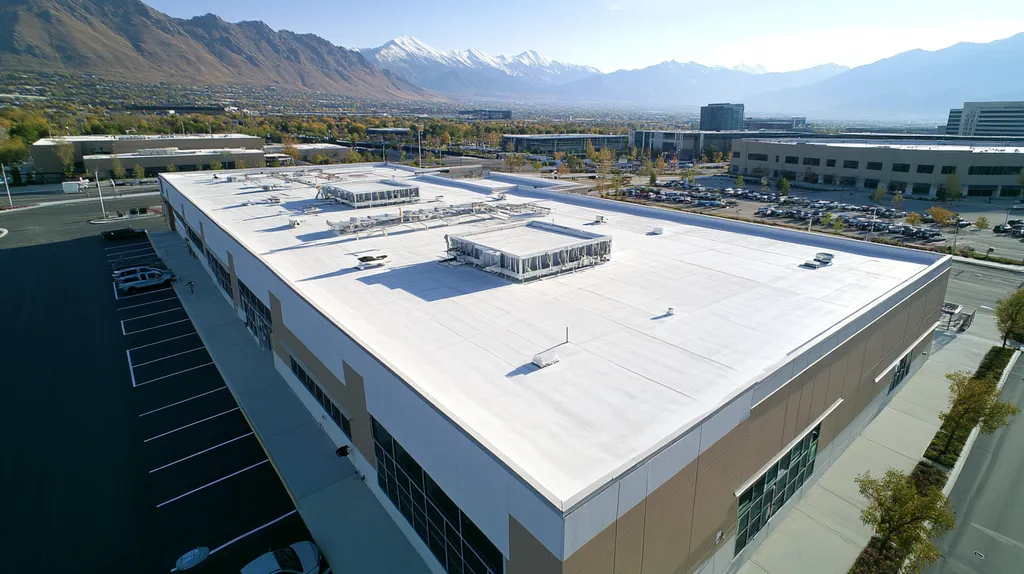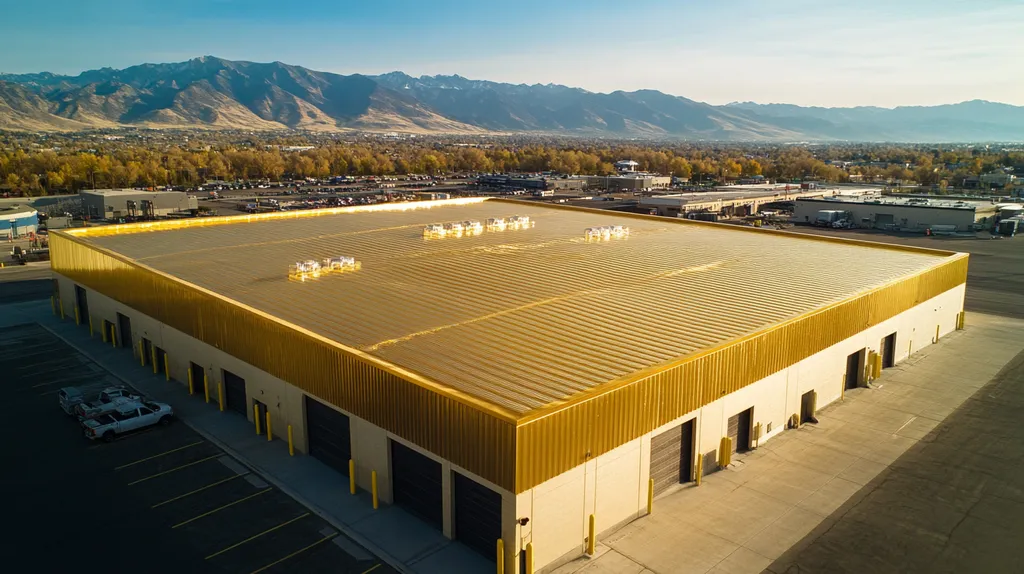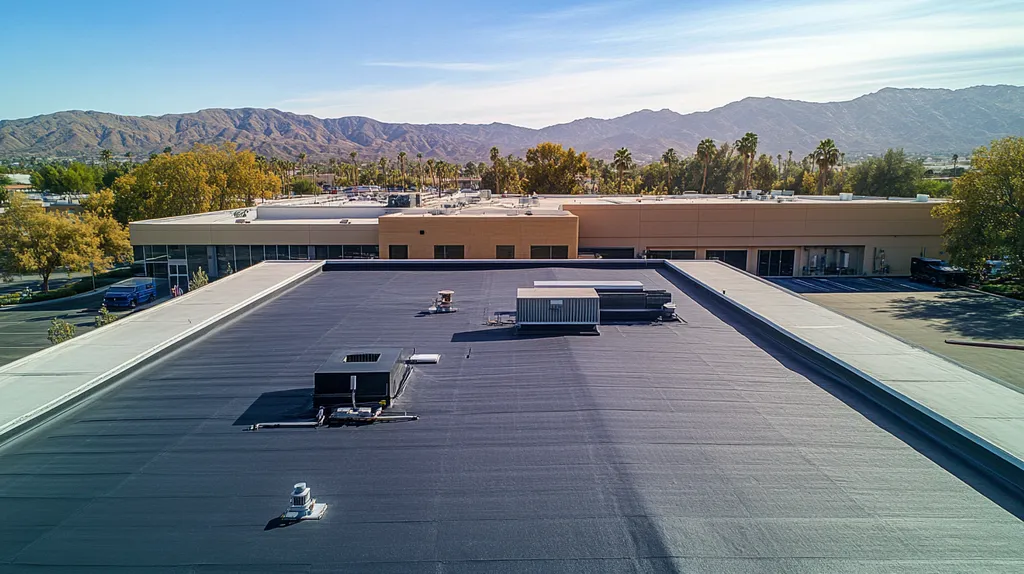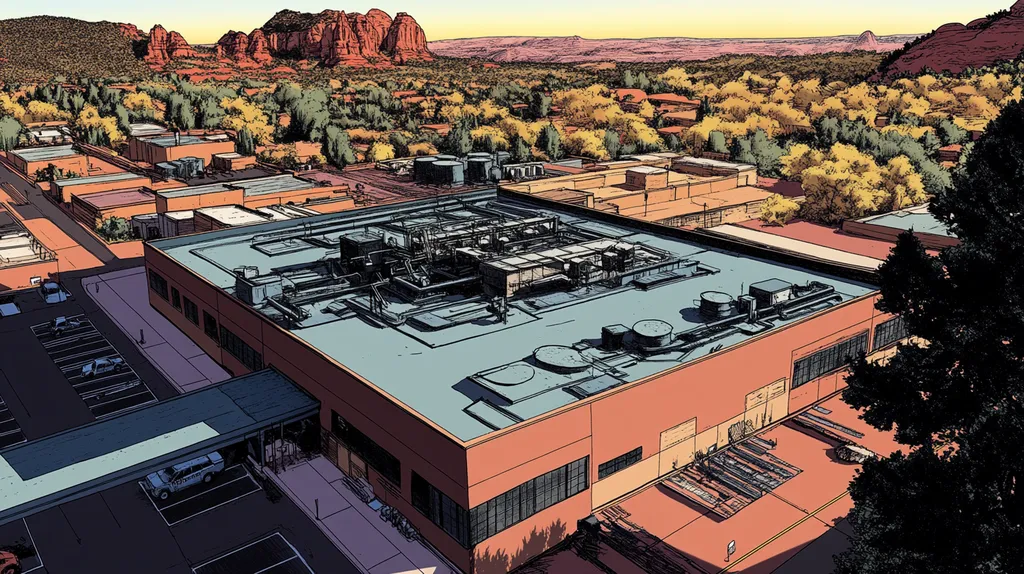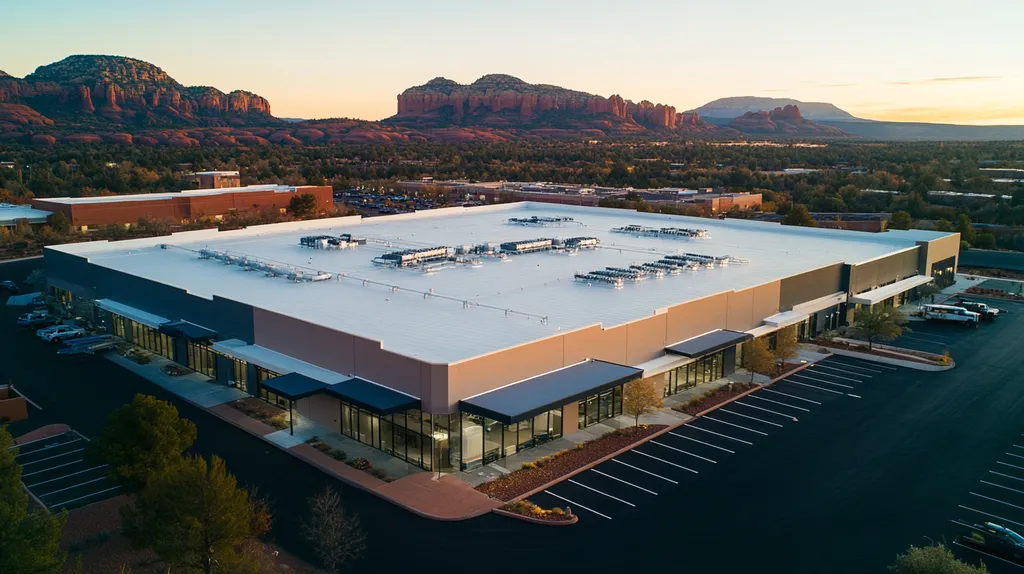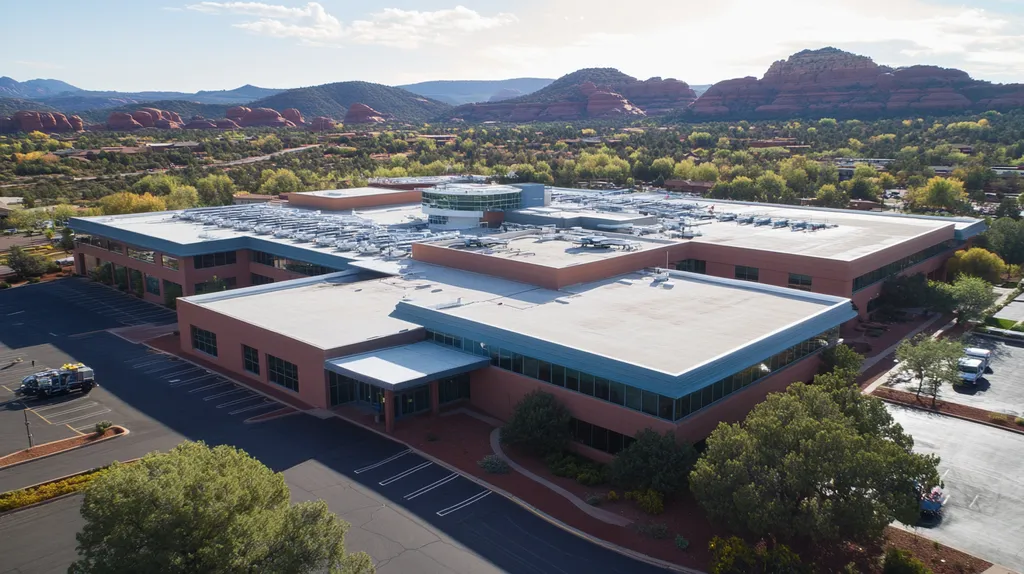In industrial roofing, coating adhesion failures account for over $500 million in annual repairs across North America, making proper testing crucial for facility longevity. Without adequate adhesion, even premium roofing materials can fail within 2-3 years of installation.
For property owners and facility managers, understanding coating adhesion testing isn’t just about maintenance—it’s about protecting substantial investments and preventing catastrophic failures.
This comprehensive guide examines the critical elements of coating adhesion, from basic principles to advanced testing protocols, providing actionable insights for ensuring optimal roofing performance.
SECTION 1: THE BASICS EXPLAINED
In the challenging world of industrial roofing, ensuring strong coating adhesion is your best defense against costly failures. Reports indicate that more than 50% of premature roofing failures stem from inadequate adhesion. For property owners and facility managers, grasping the significance of coat adhesion isn’t just about maintenance; it’s about safeguarding assets and preventing unforeseen expenses.
What It Is (In Plain Language)
Coating adhesion describes how effectively a roofing coating bonds to its underlying surface. This process hinges on both chemical and physical interactions between the coating and the roof material. When applied correctly, a securely bonded coating acts as a protective shield, reflecting harmful UV rays and resisting moisture.
Several essential elements influence adhesion, including how well the surface is prepared, the moisture content, and the temperature during application. Neglecting any of these factors can lead to coatings that peel or bubble, ultimately compromising performance.
Think of coating adhesion as the glue that keeps everything together on your roof. Without solid adhesion, even cutting-edge coatings can fall short of their promises.
Simply put, coating adhesion forms the backbone of a roof’s durability and effectiveness, directly influencing a building’s overall performance.
Why It Matters (To Your Building)
The implications of coating adhesion extend far beyond the surface. A roof lacking strong adhesion is vulnerable to leaks, structural deterioration, and rising energy expenses—complications that can create monumental challenges for property managers.
For example, research on commercial roofs has shown that roofs with excellent adhesion can outlast those with poor adhesion by approximately 25%. The costs associated with maintenance and repairs can accumulate rapidly when inadequate adhesion is an issue.
Moreover, robust coating adhesion can lead to enhanced energy efficiency by bolstering insulation and trimming down cooling costs. This factor is especially crucial for industrial operations working within narrow profit margins.
By investing in coating adhesion tests prior to application, property owners take proactive measures to shield their roofs while also contributing to the building’s sustainability, thereby enhancing long-term value.
How It Works
Coating adhesion relies on several integral processes. Proper preparation of the roof surface is vital, typically involving thorough cleaning and, when necessary, priming to improve bonding.
After application, coatings undergo a curing process where they form a secure bond with the surface. This bonding occurs through mechanical interlocking or chemical reactions, resulting in a resilient seal.
To verify adhesion quality, various testing methods, including peel tests and shear tests, are employed to measure the bond strength between the coating and the underlying material. These tests help ensure that the coating is adhering correctly, safeguarding against future issues.
Regular inspections to assess adhesion can avert expensive roof failures and augment the longevity of roofing systems. Incorporating these assessments into routine maintenance is essential for protecting your investment.
SECTION 2: PRACTICAL APPLICATIONS
Understanding the critical role of coating adhesion testing in industrial roofing can prevent major setbacks and expenses. Evidence suggests that nearly 30% of industrial roofs suffer coating failures within five years primarily due to a lack of thorough adhesion testing. It’s vital for property owners and facility managers to recognize when to conduct these tests to guarantee the durability and effectiveness of their roofing systems.
Common Uses & Examples
Coating adhesion tests are essential across various industrial environments, including warehouses, manufacturing plants, and logistics centers. For instance, prior to applying a silicone or acrylic coating on a steel roof, specific adhesive tests must be conducted to ensure proper bonding. This step helps prevent issues like peeling or flaking that can arise in drastic weather changes.
Additionally, roofs exposed to harsh conditions—such as chemicals or heavy foot traffic—greatly benefit from adhesion testing. The stakes are higher in these situations, as failures can disrupt operations and pose safety hazards.
Older roofs scheduled for refurbishment also require precise adhesion tests. These assessments help validate whether new coatings can effectively bond with existing layers, safeguarding the investment made in restoration projects.
Ultimately, these tests not only guide maintenance schedules but also provide crucial insight into the expected lifespan of roofing systems, enabling informed decision-making for long-term planning.
When You Need It Most
Adhesion testing is especially critical during specific phases of roofing projects. For new installations, performing these tests ensures the selected materials will meet performance expectations. Property owners should prioritize adhesion tests before applying coatings to mitigate the risk of future failures.
During renovations or retrofitting, the importance of adhesion testing cannot be overstated. As roofing materials degrade over time, confirming new coatings’ compatibility is vital for achieving sustained durability.
Severe weather events should also trigger immediate adhesion assessments. If a roof has recently endured extreme winds or hail, the integrity of the adhesive properties may be at risk, making it essential to evaluate how such conditions have affected the coating.
Furthermore, routine maintenance checks must include adhesion evaluations to identify potential concerns early on. This proactive strategy not only saves money but also contributes to extending the roof’s overall lifespan.
Interactions With Other Systems
Coating adhesion is interconnected with various roofing systems, making it vital to consider these relationships. The compatibility between the coating and its substrate is crucial; testing confirms that their properties align, minimizing the risk of material failure.
Moreover, the interaction between a coating and drainage systems can significantly influence roofing performance. Poor adhesion can lead to water retention, causing pooling that jeopardizes drainage functionality and increases the risk of leaks.
Coatings also affect insulation performance. An inadequately bonded coating may not create an effective seal, resulting in thermal inefficiencies. Therefore, adhesion tests can serve as indirect indicators of overall system effectiveness.
Finally, understanding how different coatings interact with existing roofing membranes can be pivotal for successful implementation. Adhesion tests are essential for ensuring all components of the roofing system work seamlessly together, promoting optimal performance and longevity.
SECTION 3: KEY TERMINOLOGY DECODED
Grasping the terminology associated with coating adhesion is essential for maintaining the health and longevity of industrial roofing. Ignoring the intricacies of adhesion can lead to substantial financial losses. For example, coatings that fail to adhere properly can cause leaks, structural problems, or the need for premature roof replacements. This section clarifies critical terms and concepts, empowering property owners and facility managers to make well-informed decisions that enhance roof performance.
Essential Terms Explained
Coating adhesion is the measure of how well a roof coating sticks to the roofing material below. This bond is vital in preventing issues like lifting or peeling over time. Key terms include ‘substrate,’ which refers to the surface that the coating is applied to, and ‘primer,’ a preparatory layer that enhances adhesion. Understanding these concepts allows property owners to appreciate the significance of proper surface preparation and the right materials.
Another important term is ‘shear strength,’ which indicates the force required to detach the coating from the substrate. A higher shear strength signifies a stronger bond, essential for durability. On the other hand, ‘delamination’ refers to the failure where the coating loses its bond and separates from the substrate. Familiarity with these definitions equips owners and managers to assess the effectiveness of various coating products critically.
Industry Jargon Translated
In roofing, technical terms can often feel intimidating. An ‘adhesion test’ evaluates the strength of the bond between the coating and its surface, frequently using several testing methods. For instance, a ‘pull-off test’ measures adhesion strength by pulling a segment of the coating away from the substrate. Knowing about these tests can aid in selecting high-quality coatings that stand the test of time.
Additionally, understanding ‘ISO ratings’ is crucial. These ratings signify the insulation effectiveness of materials used beneath coatings, directly influencing energy efficiency. A higher ISO rating means better performance and lower energy expenses. Knowledge of these terms helps property owners ensure that their roofing systems meet not just their operational needs but also environmental standards.
Measurement & Units Simplified
Adhesion measurements typically use units such as pounds per square inch (psi) to indicate how much force a coating can endure before detaching from the substrate. Generally, a bond strength of 20 psi or greater is deemed acceptable for many industrial applications. Being aware of these measurements allows facility managers to evaluate product performance and ensure compliance with industry standards.
Other relevant units include mil thickness, which measures the coating’s thickness and contributes to its overall durability. A thicker coating often offers better protection but may also affect costs. Property owners must weigh the quality against budget restrictions, ensuring they are well-informed about these key measurements for sound decision-making.
SECTION 4: DECISION FACTORS
Selecting the right coating for industrial roofing materials is crucial, yet it can feel overwhelming, especially when factoring in adhesion tests. A failure in coating adhesion doesn’t just risk a roofing system; it can lead to costly repairs, operational disruptions, and even full roof replacements. Industry analyses reveal that coatings with inadequate adhesion can reduce a roof’s lifespan by up to 20%, drastically affecting budgets and operational efficiency. Understanding these decision factors is vital for ensuring the long-term performance and reliability of roofing systems.
Cost Considerations
Cost should be a primary concern when property owners evaluate roofing solutions. While premium coatings may come with a higher initial price tag, their long-term savings often offset these upfront costs. A high-quality coating with excellent adhesion can prevent leaks, reducing the frequency of repairs and maintenance.
It’s important to assess life-cycle costs, taking into account potential savings from lowered energy bills and less frequent upkeep. Coatings that demonstrate superior adhesion help minimize damage risk, translating to financial savings over time.
By investing in thorough adhesion testing, property owners can identify the most cost-effective solutions. Overlooking these factors can lead to poor decisions, resulting in increased expenses and compromising the roof’s life span.
Consequently, comprehensive research and careful comparison of options can yield products that provide lasting value and performance.
Performance Trade-offs
Performance trade-offs are an essential aspect to consider when choosing a coating. High-performance options may offer outstanding adhesion, but they could sacrifice other crucial features such as flexibility or UV resistance. For instance, while polyurethane coatings excel in adhesion, they may not tolerate extreme temperature variations as effectively as other options.
Striking a balance between adhesion and other critical performance metrics is vital for meeting specific operational needs. Each coating type has unique characteristics, and recognizing these differences can lead to more informed decisions.
Conducting tests that evaluate adhesion alongside other performance factors ensures property managers maintain overall quality without compromise. Using standardized testing protocols can highlight the best solutions available in the market.
Ultimately, prioritizing a well-rounded performance across various metrics will secure the roof’s integrity and long-term functionality.
Lifespan & Durability Factors
The lifespan and durability of a coating are deeply tied to its adhesion properties. Strong adhesion helps coatings withstand harsh weather conditions, significantly reducing the chances of peeling or chipping. Studies show that roofing systems with robust adhesion may last up to 30% longer than those lacking it.
Property owners should opt for coatings specifically designed for their roofing materials and environmental conditions. For example, a coating that thrives in humid climates will dramatically enhance longevity when adequately bonded to the substrate.
Engaging in regular adhesion testing and monitoring helps identify wear signs over time. This proactive approach facilitates timely interventions, which can extend the life of roofing systems.
Ultimately, choosing coatings that undergo rigorous scientific tests and validations for durability will optimize investments while preserving the structural integrity of the building.
SECTION 5: COMMON CHALLENGES
Addressing coating adhesion to industrial roofing materials is not just best practice—it’s a necessity. Poor adhesion can lead to frustrating leaks, costly structural damage, and health risks, potentially costing property owners thousands of dollars in repairs and downtime. Recognizing and addressing common challenges related to adhesive failures can make a significant difference. This section outlines frequent problems, warning signs to look for, and preventative strategies to enhance roofing performance and longevity.
Frequent Problems & Solutions
One widespread challenge to achieving strong coating adhesion is inadequate surface preparation. Contaminants such as dirt, oil, and moisture can significantly hinder adhesion, often resulting in peeling or blistering. Property owners must prioritize thorough cleaning and drying of surfaces before applying coatings. Effective solutions include utilizing power washers or chemical cleaners to ensure roofs are spotless before treatment.
Another frequent issue arises from the use of incompatible materials. Certain coatings may fail to bond well with specific roofing substrates, leading to premature coating failures. To prevent this, engaging with manufacturers or industry professionals to confirm material compatibility is essential before commencing a roofing project.
Weather conditions during application can also cause serious problems. Extreme temperatures and high humidity levels can impede curing and compromise adhesion strength. To minimize these risks, it is crucial to carefully select application times that avoid poor weather conditions.
Implementing regular maintenance checks can help identify issues early, thwarting extreme complications before they begin. Establishing a consistent evaluation schedule ensures the roof remains in optimal condition throughout its lifespan.
Warning Signs To Watch For
Identifying early warning signs of adhesion failures can save property owners both time and money. Blistering or bubbling on the surface of the coating is often one of the first indicators that adhesion has been compromised. When these visual clues appear, they should prompt immediate investigation to address potential problems before they worsen.
Additionally, visible peeling or flaking of the coating indicates poor bonding with the substrate. If neglected, this deterioration can escalate into leaks and significant water damage. Routine inspections should always include checks for these critical warning signs.
Staining or discoloration on the roof may also suggest underlying adhesion problems. Such stains often indicate moisture issues that can jeopardize the roof structure. It’s crucial for property managers to address these stains promptly to avoid more extensive damages.
By staying vigilant for these warning signs, property owners can ensure timely repairs or recoating, ultimately preserving the integrity and longevity of their roofing systems.
Preventative Approaches
Taking proactive measures is vital to ensure long-lasting coating adhesion. Regular maintenance and consistent roof inspections can help spot wear and tear before they evolve into significant complications. Establishing a routine inspection schedule helps maintain optimal conditions for coating adhesion.
Furthermore, educating facility managers and their teams on the importance of proper application techniques can mitigate risks significantly. Training on correct procedures for cleaning and surface preparation is crucial for successful application. Continuous education keeps teams well-versed in the latest best practices.
Implementing a robust warranty program also acts as an effective preventative measure. Many warranties require specific maintenance and inspection routines, which further ensures coatings remain effective. Following warranty guidelines helps safeguard against adhesion failures.
Lastly, investing in high-quality materials is paramount. Selecting reputable brands and proven products can dramatically reduce the risks of coating failures. Quality materials contribute to improved adhesion performance, ensuring that the roofing system serves its purpose for years to come.
SECTION 6: NEXT STEPS & RESOURCES
Securing proper coating adhesion to industrial roofing isn’t just beneficial—it’s essential for a roof’s performance and lifespan. Without rigorous testing for adhesion, roofing surfaces can deteriorate swiftly, leading to budget-busting repairs and operational disruptions. Property owners and facility managers must take action by addressing potential adhesion challenges proactively. This section outlines critical questions to pose to roofing service providers, highlights vital industry standards, and presents resources for further exploration.
Questions To Ask Providers
When engaging roofing providers, asking the right questions is crucial to ensure thorough adhesion testing. Start by inquiring about their specific testing methods for adhesion. It’s vital to know if they adhere to standardized procedures, as this will help you make well-informed decisions.
Request documented evidence of their certifications and compliance with industry guidelines. A reputable provider should readily demonstrate their knowledge of relevant standards.
Additionally, ask for case studies or examples showcasing how their adhesion testing has averted significant issues in past projects. This insight can help you assess their reliability and effectiveness.
Finally, confirm the warranty terms concerning adhesion performance. A strong warranty reflects the provider’s confidence in their workmanship and materials, ensuring your investment is well-protected.
Industry Standards & Guidelines
Being familiar with industry standards is vital for securing proper coating adhesion. The American Society for Testing and Materials (ASTM) outlines best practices, such as ASTM D3359, which details the adhesion testing process for coatings on substrates.
Moreover, the National Roofing Contractors Association (NRCA) provides extensive resources that highlight best practices for the application of coatings. Familiarity with these standards helps minimize the risk of coating failures.
Additionally, staying aware of local building codes is critical. Many municipalities impose specific requirements for roofing materials and coatings, which must be met to avoid penalties.
Utilizing these standards not only enhances roof performance but also extends its lifespan, leading to considerable cost savings over time.
Further Learning Simplified
Property owners and facility managers can greatly benefit from additional resources to enhance their understanding of coating adhesion. Websites such as NRCA and ASTM offer a wealth of information regarding various standards and guidelines.
Participating in webinars and workshops provides interactive opportunities for learning directly from industry experts, where attendees can ask specific questions and gain valuable insights.
Moreover, trade publications and industry forums encourage discussions about the latest trends and innovative practices in roofing coating technologies.
By investing time in education, stakeholders can make informed decisions that secure the long-lasting performance of their industrial roofing systems.
The Bottom Line
With over $500 million spent annually on coating adhesion failures, the stakes for proper testing couldn’t be higher for industrial facilities.
Thorough adhesion testing can extend a roof’s lifespan by 25-30% while dramatically reducing maintenance costs and preventing catastrophic failures.
Property owners and facility managers must prioritize standardized testing protocols, proper surface preparation, and regular inspections to protect their substantial roofing investments.
The technology and testing methods available today make it possible to virtually eliminate adhesion-related failures, provided organizations follow established guidelines and work with certified professionals.
By implementing comprehensive testing programs and staying current with industry standards, facilities can ensure their roofing systems deliver maximum performance and value for decades to come.
FREQUENTLY ASKED QUESTIONS
Q. What is coating adhesion in commercial roofs?
A. Coating adhesion refers to how effectively a roofing coating bonds to its surface. It involves both chemical and physical interactions, ensuring secure protection against elements. Proper adhesion is crucial for preventing failures, leaks, and costly repairs, making it the backbone of roof durability.
Q. When should I test adhesion on my industrial roof?
A. Conduct adhesion testing during key phases such as new installations, renovations, or extreme weather events. These assessments help ensure proper bonding and compatibility between coatings and existing materials, thereby reducing the risk of failures and extending the lifespan of your roofing system.
Q. What are key terms regarding coating adhesion for commercial roofs?
A. Important terms include ‘substrate,’ referring to the surface that receives the coating, and ‘shear strength,’ which measures the bond’s durability. Understanding these concepts helps property owners ensure proper surface preparation, material compatibility, and anticipate potential adhesion issues.
Q. How do cost factors impact coating adhesion choices?
A. Cost considerations should focus on life-cycle expenses rather than just initial prices. Premium coatings with robust adhesion can prevent leaks and reduce maintenance costs, leading to overall savings. Investing in quality tests assures that you choose the most cost-effective and durable roofing solutions for your property.
Q. What challenges could affect coating adhesion on industrial roofs?
A. Common challenges include inadequate surface preparation, incompatible materials, and adverse weather conditions during application. Addressing these issues is crucial as they can severely compromise adhesion and lead to ongoing problems like peeling, leaks, and costly repairs.
Q. What questions should I ask roofing providers about adhesion?
A. Ask providers about their adhesion testing methods, certifications, and relevant industry compliance. Request case studies demonstrating past successes with adhesion testing. Also, inquire about warranty terms regarding adhesion performance, ensuring that your investment is safeguarded for the long term.
Q. How can I ensure long-term coating adhesion success?
A. To secure long-term adhesion, prioritize proper surface preparation and regular maintenance checks. Continuous education for maintenance teams on best practices can mitigate risks. Investing in high-quality materials and conducting thorough adhesion testing will significantly increase the longevity and performance of your roofing system.

